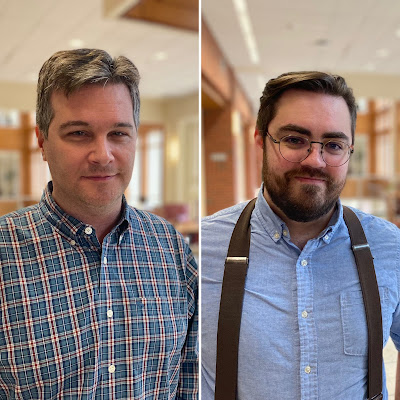OU Scientist Says State's Investment in People Transforming Landscape
“Oklahoma has developed a completely new frontier in terms of economic growth. We are investing in people who can transform both our technology and economic landscape,” he said.
The investment includes state funding for new faculty in the OU Gallogly College of Engineering. Venkatesan is one of 20 faculty hired in 2021, with plans to hire an additional 48 in the next four years. The funding puts Oklahoma in line with other states that have realized the need for engineering support.
The goal of the center is to bring together faculty and students interested in quantum materials, sensors, quantum communications and computing. So, Venkatesan’s rare skillset combining fundamental science, applied research and technology transfer in a variety of fields makes him ideal to lead the effort.
Venkatesan’s research, however, is much more complex than a goal statement. His life’s work is to find a way for technology to emulate the brain – and that work continues to garner international attention.
Discovering a Wonder Molecule
Venkatesan is an internationally noted leader in advanced technology innovation. His research career started at Bell Labs in 1973. He has filed over 45 patents, has over 800 publications and mentored hundreds of students. In 2022, he will be formally inducted into two prestigious organizations: the National Academy of Inventors and the Royal Society, the same group to which Albert Einstein and Stephen Hawking were elected for their contributions to science. Venkatesan is being recognized for inventing the pulsed deposition process, a process that can convert almost any solid inorganic material (like silver or sulfur) into an atomically controlled thin film coating. The process is useful in manufacturing areas like optics or electronics.
Venkatesan has long recognized that the world’s future is artificial intelligence, where machines can perceive their environment and emulate human-like activities. In 2021, the field is growing at an extraordinary pace. It was just in the mid-1990s that IBM developed the supercomputer Deep Blue that eventually defeated the chess world champion. Deep Blue used a vast amount of power, or terawatts, while the brain uses only 20 watts in comparison.
However, researchers have discovered that silicon technology is not the best option to address how the brain works, Venkatesan says. That’s where his latest research comes in.
“Silicon circuits are not optimally designed to emulate the human brain,” he said. “That’s where the action begins – researchers asking what circuitry will mimic the human brain and its actions. The challenge is that researchers cannot bring down the power required to that of brain level.”
Venkatesan and his team are closer to finding those answers. Their findings have been published several times in Nature, one of the world’s leading multidisciplinary science journals. Two team members started the molecular device project under Venkatesan’s guidance: Sreetosh Goswami, a faculty member at the Indian Institute of Science India, and Sreebrata Goswami, a scientist at the Indian Association for Cultivation of Sciences.
“The key to the entire project was the wonder molecule discovered by Sreebrata. His discovery is making current state-of-the-art technology look like something out of the Stone Age,” Venkatesan said. Meanwhile, Sreetosh had created a tiny electrical circuit consisting of a 40-nanometer layer of molecular film sandwiched between a layer of gold on top and gold-infused nanodisc and indium tin oxide at the bottom. On applying a negative voltage on the device, Sreetosh witnessed a current-voltage profile that was nothing like he had seen before.
Venkatesan thinks of the molecular device as an on-off switch. “As we were sweeping the voltage more negative, the device first switched from on to off, then off to on, then on to off, and then back to on. We were blown out of our seats. We had to convince ourselves that what we were seeing was real.”
Five years later, Venkatesan and a team of investigators worldwide are convinced that their molecular device will design next-generation processing chips with enhanced computational power and speed – all using significantly reduced energy.
“It was quite extraordinary; our device was doing something like what the brain does, but in a very different way,” Sreetosh said. “When you’re learning something new or when you’re deciding, the brain can reconfigure and change physical wiring around. Similarly, we can logically reprogram or reconfigure our devices by giving them a different voltage pulse than they’ve seen before.”
The molecular device uses 1,000 times less energy than conventional silicon. “All of a sudden, you’re bringing down the energy closer to a human-like operation.”
Venkatesan noted it would take multiple transistors to perform the same computational functions as their molecular devices. Hence, he said the technology would first be used in handheld devices, like cell phones and sensors, and other applications where power is limited.
“AI and machine learning are very pervasive in our lives and electronics technology will help facilitate that growth,” he said.
Looking to the Future
At the end of the day, Venkatesan considers himself a teacher first and foremost. In addition to overseeing OU’s quantum research and technology efforts, he is also a professor in both electrical and computer engineering, and physics and astronomy.
“I am a cheerleader. I am a monitor,” he says. “From Day 1, I’ve been insistent on working with students who want to make an impact on society and on producing world-class professionals. I hope to do the same at the University of Oklahoma.”
Venkatesan is currently searching for his next crop of superstars. The student researchers will focus on quantum materials, sensors, metrology, secure communications and computing.
Venkatesan keeps his mission constant: Help launch students into the world of industry and education and grow and encourage entrepreneurial mindsets. “We all can make an enormous difference in this world – especially as an educator. My goal is to produce a professional out of a student.”
Learn more about OU Engineering.
By Lorene A. Roberson, Gallogly College of Engineering
1



